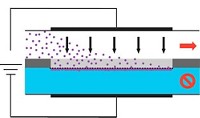Advertisement
Grab your lab coat. Let's get started
Welcome!
Welcome!
Create an account below to get 6 C&EN articles per month, receive newsletters and more - all free.
It seems this is your first time logging in online. Please enter the following information to continue.
As an ACS member you automatically get access to this site. All we need is few more details to create your reading experience.
Not you? Sign in with a different account.
Not you? Sign in with a different account.
ERROR 1
ERROR 1
ERROR 2
ERROR 2
ERROR 2
ERROR 2
ERROR 2
Password and Confirm password must match.
If you have an ACS member number, please enter it here so we can link this account to your membership. (optional)
ERROR 2
ACS values your privacy. By submitting your information, you are gaining access to C&EN and subscribing to our weekly newsletter. We use the information you provide to make your reading experience better, and we will never sell your data to third party members.
Analytical Chemistry
Assay Could Shed Light On Potential Stress Biomarker
Analytical Chemistry: A method that converts isatin to a related fluorescent molecule may speed up studies of isatin’s role in stress and neurological problems
by Puneet Kollipara
April 30, 2015

Isatin, a potential biomarker for stress found in blood, might become easier and faster to detect and quantify, thanks to a new enzymatic assay (ACS Chem. Neurosci. 2015, DOI: 10.1021/cn500346x). The new, potentially higher throughput method could help scientists study isatin’s role in stress more quickly and open the door to routine blood testing for the molecule, the researchers say.
Stress is a silent contributor to many health problems, since there is no single biomarker to detect it and patients may not tell physicians about it during routine medical exams. Isatin inhibits monoamine oxidase B, an enzyme found in the brain that is elevated in neurological disorders such as Parkinson’s and Alzheimer’s diseases. Some research has also linked blood levels of isatin to stress and anxiety in humans and lab animals. Many scientists wonder whether elevated levels of the compound could serve as a potential warning sign of stress in people.
But to study what role isatin plays in stress-related molecular processes, researchers need quick analytical tools that can test many samples for isatin at once. Traditional detection methods such as mass spectrometry and high-performance liquid chromatography (HPLC), however, tend to be cumbersome and low throughput.
Jens Preben Morth of the Centre for Molecular Medicine Norway and his colleagues sought to develop a faster method. After first centrifuging out any cells from blood samples, the researchers spike the samples with a solution that contains varying, known amounts of isatin and then extract the isatin and convert it to a fluorescent molecule. They can then infer the concentration of the naturally occurring isatin linearly from how the fluorescence intensity varies based on the amount of added compound.
To extract the hydrophobic isatin, the researchers add ethyl acetate to each sample. They then convert isatin to hydrophilic isatinate with a hydrolase enzyme. Finally, the researchers add hydrogen peroxide to transform isatinate into anthranilate, which is fluorescent, and then measure the resulting glow with a fluorometer.
To demonstrate the method, the researchers spiked blood samples from a dozen pigs with isatin in concentrations ranging from 0 to 400 nM. In the pig samples, the fluorescence signal increased linearly with the isatin dosage, and as expected, samples that weren’t spiked still glowed from the naturally occurring isatin. The researchers also spiked blood samples from a human volunteer, drawn once a week for three weeks, and found natural isatin concentrations ranging from 420 to 462 nM, consistent with values for human serum samples measured in HPLC studies.
This fluorometric method should be adaptable to a higher-throughput, 96-well-plate format, Morth says, which should help speed research and offer the possibility of clinical testing. But he also notes that isatin levels can vary wildly from person to person depending on factors from diet to geography to environment; as such, changes in isatin levels over time are likely far more important than the levels themselves.
F. Peter Guengerich, a biochemist at Vanderbilt University, compliments the team on a “simplified and potentially useful” tool for studying what could emerge as an important biomarker of stress and perhaps neurological diseases such as Parkinson’s. But he worries that the method wouldn’t precisely measure isatin levels below the amounts observed in this study. That’s not only because the method relies on extrapolation, but also because the team’s isatin-extraction yields were only around 25%.



Join the conversation
Contact the reporter
Submit a Letter to the Editor for publication
Engage with us on Twitter